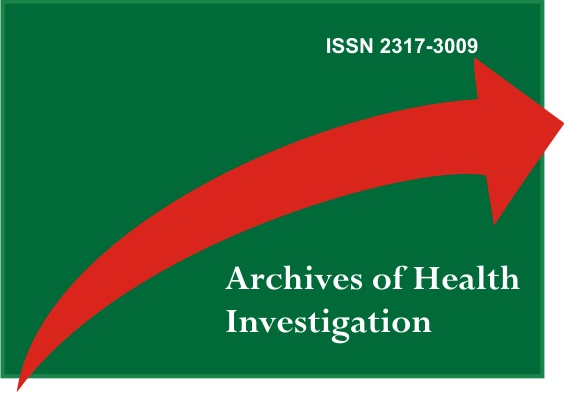Importance of Cytopathological Examination for the Diagnosis of Ameloblastoma: Case Report
DOI:
https://doi.org/10.21270/archi.v11i3.5546Keywords:
Ameloblastoma, Diagnosis, Odontogenic Tumors, Biopsy, NeedleAbstract
Ameloblastomas are benign tumors of odontogenic origin with a high destructive power that often affect the mandible region. After suspicion, some tests are performed to obtain the diagnosis, such as imaging, histopathological and immunohistochemical tests. Aspiration puncture, ordinarily used as a semiotechnical maneuver to characterize the nature of the lesion (cystic or solid), may be important in the diagnostic elucidation of these cases in a cytopathological examination. This paper reports the clinical case of a 28-year-old male patient complaining of a “cyst” with an increase in volume and an eight-month evolution in the right anterior region of the mandible. For diagnosis, an aspiration puncture was performed in the tumor region, primarily, and an incisional biopsy sequentially, the collected materials were sent for cytopathological and histopathological examinations, respectively. The report of the first exam was suggestive of ameloblastoma, which can be confirmed in the histopathological exam. The treatment was the removal of the tumor with a safety margin. The report shows the importance of cytopathological examination as a diagnostic tool for elucidating expansive lesions in the maxillary bones. Aspiration puncture for collecting the material for this purpose is a simple, fast and inexpensive technique. When done well, its result is satisfactory and can have great diagnostic value.
Downloads
References
Neville B. Patologia oral e maxilofacial. Elsevier Brasil, 2011.
Martins MD, Rosa Junior OA, Martins MAT, Bussadori SK, Fernandes KPS. Ameloblastoma: revisão de literatura. ConScientiae Saúde. 2007;6(2):269-78.
Tolentino ES. Nova classificação da OMS para tumores odontogênicos: o que mudou? RFO UPF. 2018;23(1):119-23.
Campos GM. Ameloblastoma, a behavioral and histologic paradox (a philosophical approach). Braz Dent J. 1990;1(1):5-15.
Black CC, Addante RR, Mohila CA. Intraosseous ameloblastoma. Oral Surg, Oral Med, Oral Pathol, Oral Radiol Endod. 2010;110(5):585-92.
Khan N, Afroz N, Haider A, Hasan SA, Hashmi SH. Fine needle aspiration biopsy of intra-osseous lesions of the mandible and maxilla. Indian J Otolaryngol Head Neck Surg. 2008;60(2):128-32.
Ramadan H, Wax MK, Boyd CB. Fine-needle aspiration of head and neck masses in children. Am J Otolaryngol 1997;18(6):400-4.
Martin HE, Ellis EB. Biopsy by needle puncture and aspiration. Ann Surg.1930;92:169-81
Franzen S, Giertz G, Zajicek J. CytologIcal dIagnosIs of prostatic tumours by transrecml asplralton. bIopsy aprehmmary repon Br J Urol. 1960;32:193-96.
Coley BL, Sharp GS, Ellis EB. Diagnosis of bone tumors by aspiration. Am J Surg 1931;13:215-24.
Cherian LM, Beena D, Paul DS. Fine needle aspiration cytology of intra-osseous lesions of the oral cavity. 2017:ID:32510601
Rahaju AS, Fauziah D, Kusumastuti EH. Diagnostic accuracy of pre-operative fine needle aspiration biopsy in ameloblastoma. Fol Med Indones. 2010;46(1):41.
Singh S, Garg N, Gupta S, et al. Fine needle aspiration cytology in lesions of oral and maxillofacial region: Diagnostic pitfalls. J Cytol. 2011;28(3):93-7.
Gomes ACA, Oliveira e Silva ED, Albert DGM, Lira MFC, Andrade ESS. Conceito atual no tratamento dos ameloblastomas. Rev cir traumatol buco-maxilo-fac. 2006;6(3):9-16.


